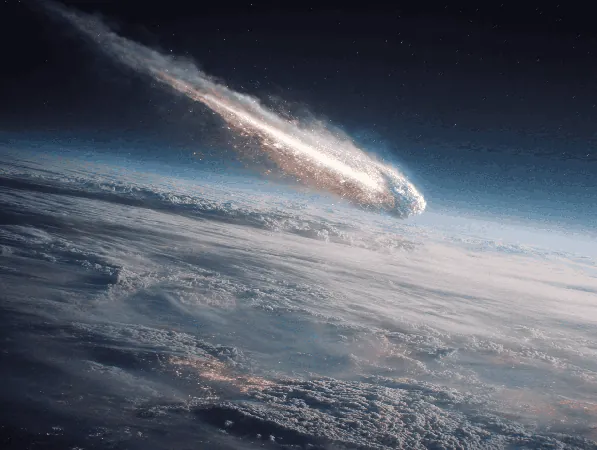
Did an Exploding Comet Trigger a Grueling Ice Age 12,800 Years Ago?
2025-08-18
Author: Yu
A Cosmic Mystery Unraveled
In a groundbreaking revelation, scientists have unearthed evidence suggesting that a massive comet explosion rocked Earth 12,800 years ago, plunging the planet into an icy grip known as the Younger Dryas. This chilling event reportedly lasted over a millennium, marking one of the most significant climate anomalies in our planet's history.
Deep-Sea Discoveries
A recent study by researchers from the University of South Carolina has bolstered this theory through an extensive analysis of Baffin Bay seafloor muck. Within this ancient sediment, researchers found traces of comet dust and metallic remnants consistent with a cataclysmic cosmic airburst. Could this evidence finally solve the mystery behind Earth's abrupt climate shift?
The Climate Debate
For years, scientists have argued over the catalyst of the drastic global cooling that interrupted the warming trend following the last Ice Age. While some linked the event to massive meltwater flooding the Atlantic, others speculated about extraterrestrial causes. The absence of definitive proof, like a crater, allowed skeptics to dismiss the comet explosion theory—until now.
The Impact Hypothesis Strengthened
"Our findings lend substantial support to the hypothesis that a large comet collided with Earth," said Vladimir Tselmovich, one of the study’s authors. The comet’s debris, he indicated, would have triggered a temporary 'impact winter,' resulting in a persistent chill that lasted approximately 1,400 years.
Unearthing Earth's Diary
To determine if cometary evidence found on land extended to oceanic sediment, the team drilled into the seabed for sediment cores. These cylindrical samples, which chronicle Earth's geological history layer by layer, revealed telltale signs of the Younger Dryas period through radiocarbon dating.
Scientific Analysis Reveals Intriguing Clues
Upon studying these samples, researchers discovered an intriguing array of metallic grains exhibiting high levels of nickel, cobalt, platinum, and iridium—elements commonly associated with extraterrestrial material. Some iron particles showed an unusual chemical profile, hinting at their origin: a comet or meteorite.
Beyond the Stars: Extreme Conditions
Their research also identified microspherules—tiny spheres formed from molten rock—indicating that terrestrial particles mingled with extraterrestrial dust during a high-energy airburst. Other findings included deformed metallic droplets, providing more evidence of the extreme heat and pressure from a cosmic explosion.
Consistency Across Continents
This consistency between marine and terrestrial sites fortifies the argument that the Younger Dryas cooling was not just a local anomaly, but a global event likely instigated by a fragmented comet scattering dust throughout the atmosphere. For life on Earth, this would have been catastrophic: temperatures plummeted, crops died, and the fragile warming trend that had begun ended abruptly.
Revisiting Climate History
If verified, this research could redefine our understanding of one of the planet's biggest climatic enigmas. The Younger Dryas wasn’t merely a fleeting event; it transformed ecosystems and contributed to the extinction of mammoths and other megafauna in North America, coinciding with the decline of ancient Paleo-Indian cultures.
What's Next for Researchers?
Despite these compelling findings, the quest for conclusive evidence continues. Researchers acknowledge the need for more work, particularly in searching for a crater and analyzing additional oceanic sediment samples. Could this next wave of research finally confirm the link between a cosmic disaster and our planet's climatic upheaval?



 Brasil (PT)
Brasil (PT)
 Canada (EN)
Canada (EN)
 Chile (ES)
Chile (ES)
 Česko (CS)
Česko (CS)
 대한민국 (KO)
대한민국 (KO)
 España (ES)
España (ES)
 France (FR)
France (FR)
 Hong Kong (EN)
Hong Kong (EN)
 Italia (IT)
Italia (IT)
 日本 (JA)
日本 (JA)
 Magyarország (HU)
Magyarország (HU)
 Norge (NO)
Norge (NO)
 Polska (PL)
Polska (PL)
 Schweiz (DE)
Schweiz (DE)
 Singapore (EN)
Singapore (EN)
 Sverige (SV)
Sverige (SV)
 Suomi (FI)
Suomi (FI)
 Türkiye (TR)
Türkiye (TR)
 الإمارات العربية المتحدة (AR)
الإمارات العربية المتحدة (AR)